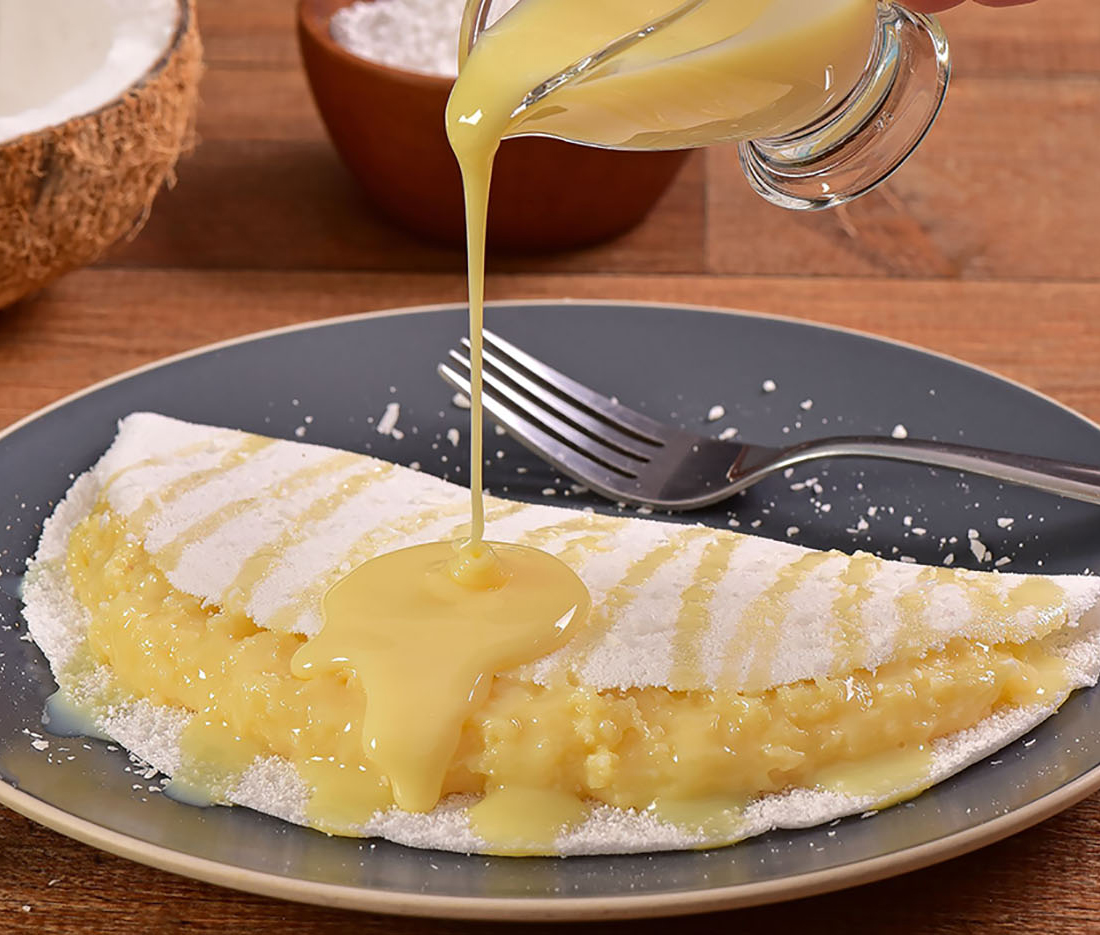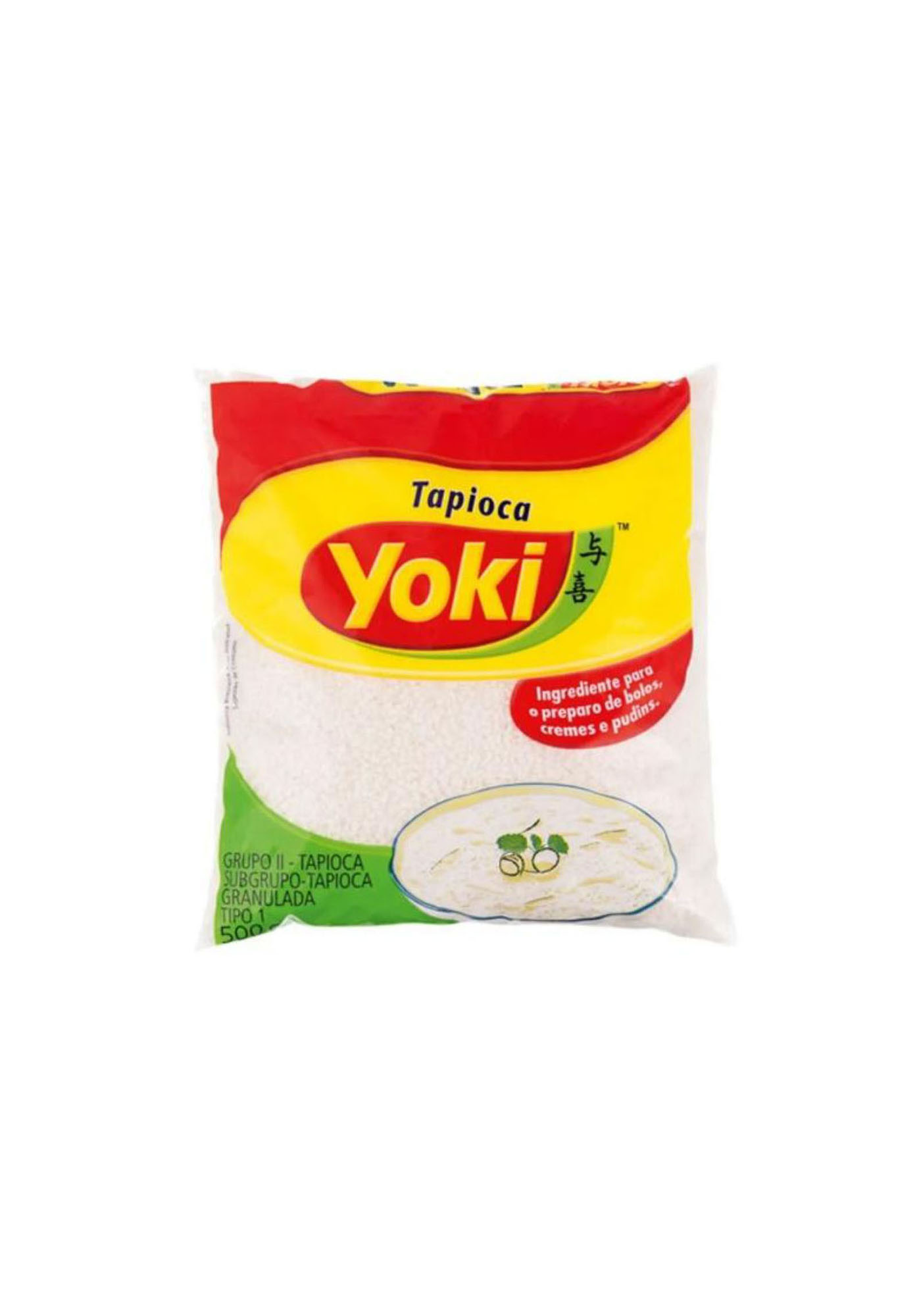
Gluten Free: Tapioca
Tapioca is an excellent gluten-free food, it helps you lose weight, it can help you gain healthy weight (if you wish) and it is rich in B vitamins. You will find out below all the benefits of tapioca and you will learn how to make a delicious recipe.
Tapioca is rich in starch, which is an excellent source of carbohydrates, the best source of energy for your body. In addition, it also has a little zinc, potassium and is low in fiber. Before consuming, it is worth checking if tapioca is good or bad for your health..
According to a study by the University of Wisconsin in the United States, the increase in triglyceride levels may be associated with the amount of carbohydrates ingested. On the other hand, it is a cholesterol-free food. To understand more about this, you can check if tapioca increases triglycerides and cholesterol..
Tapioca is a starch, extracted from the cassava root (Manihot esculenta).In the north and northeast regions of Brazil, tapioca is part of many people’s breakfast and snacks. But who would have guessed that manioc gum, which so many people consume with butter, condensed milk, rennet cheese, among other fillings, would be successful in the healthy world, as it has today?
One of the main reasons why tapioca has recently gained popularity is because it is a gluten-free food, and serves as a thickener, to improve food consistency, in recipes where wheat flour was originally used. Other benefits of tapioca include its ability to help with healthy weight gain, increase circulation and the production of red blood cells, protect against malformation of the fetus, improve digestion, reduce cholesterol, prevent diabetes, improve metabolic activities , protect bone density, prevent Alzheimer’s disease, protect heart health and maintain fluid balance within the body.
How tapioca came about – A little history
The Tupi-Guarani Indians already used manioc starch as food before colonization by the Portuguese and they were responsible for popularizing their consumption. When Brazil was divided into Hereditary Captaincies, the colonists who formed the province of Pernambuco discovered that, due to its greater durability, tapioca could be a good substitute for bread. In the sixteenth century, in the Pernambuco city of Olinda, beiju, a version of tapioca that we know today, was already consumed. Over the years, the product began to be consumed throughout the northeast region, reaching other tribes, the colonizers until it became a food also for slaves.
As it is a delicacy widely consumed in the Northeast, in 2006 tapioca won recognition by the Preservation Council of the Historic Site of Olinda. Since then, tapioca holds the title of Cultural and Intangible Heritage of the city. Olinda has the title of first Brazilian Capital of Culture, granted by the Ministry of Culture and Tourism.
Tapioca properties
Cassava, tapioca’s raw material, is one of the richest sources of carbohydrates, vitamin B9 (folic acid), vitamin C, magnesium, manganese and copper. It is a significant source of iron and low in sodium.
Tapioca is a food made with cassava starch, a floury substance extracted from its roots, which gives rise to sweet starch (cassava gum). It is prepared like a pancake, and also known as beiju. There are many filling options that can be used in tapioca, just be alert so that the chosen filling does not destroy its nutritional benefit.
Nutritional information per unit without filling
- Energy: 68 calories
- Carbohydrates: 16.7 g
- Sugar: 0.6 g
- Protein: 0.05 g
- Fat: 0 g
- Fibers: 0.2
1- Gluten free
Tapioca does not have gliadin, a protein present in gluten, which when consumed by people who are unable to digest it, causes an immune reaction in the intestine starting a chronic inflammatory process. So it can be consumed without fear by people with celiac disease, that is, who have gluten intolerance.
Now that we know that tapioca is gluten free, it is very important that you know the correct amount of carbohydrates in a portion of tapioca.You will be able to extract enough information to answer if it is a proper food for your diet.
2- Helps weight loss
Tapioca has become the darling of weight loss diets. Low in calories and gluten free, it is still absorbed more slowly than bread. To better understand how to take advantage of the benefits of tapioca to lose weight seeHow to Make Tapioca for Weight Loss – 10 Recipes and Tips.
3- Helps healthy weight gain
The benefits of tapioca also include those who wish to gain weight. While most people are concerned about losing weight, there are those looking to gain weight. Tapioca provides a quick way to gain weight in a healthy way. Because it contains a high content of carbohydrates, it can be added to your diet, without the inconvenience of cholesterol and bad fats, which, in turn, when elevated, can cause various health problems. Therefore, tapioca consumption is a beneficial choice to gain weight in a healthy way.
4- Rich in B vitamins
Tapioca contains significant amounts of B vitamins, including folic acid, which is very important in reducing the chances of neural tube defects in babies. Therefore, it is a good choice for pregnant women.
5- Improves bone health
Tapioca is a good source of vitamin K, calcium and iron. These nutrients play an important role in the protection and development of bones. Bone mineral density decreases with age, causing problems such as osteoporosis, osteoarthritis and decreased flexibility. The benefits of tapioca provide an improvement in bone health.
6- Properties that benefit to the blood
The iron content is one of the benefits of tapioca for the blood, in general. Iron is essential for the normal functioning of the body, and contributes to several more important functions, such as the production of red cells. Together with copper (also present in this food), iron increases the amount of red blood cells in the body, thus preventing conditions such as anemia and other related diseases.
7- Increases energy
Carbohydrates are the body’s fuel. Tapioca has a large amount of carbohydrates, and, on the other hand, has no cholesterol or saturated fats, providing a good energy load for the day.
8- Source of vitamin K: a neurological aid
Tapioca is a source of K vitamin,which plays an important role in neural functioning. Vitamin K is related to the decrease in the chances of developing Alzheimer’s disease, by benefiting some brain activities and mechanisms. Vitamin K keeps the neural pathways active and free from free radicals that can cause damage to brain tissues.
9- Helps control blood pressure.
Another of the benefits of tapioca comes from its potassium content, an essential mineral for the body. Potassium is a vasodilator, that is, it reduces the tension and stress of blood vessels and arteries. As it contains a lot of this mineral, consuming tapioca can increase the blood flow in the body and reduce the pressure on the heart.
The result of this is a reduction in the chances of atherosclerosis and blood clots. In addition to also reducing the chances of heart attacks or strokes. Potassium is also essential for the balance of body fluids. When it is in balance with the sodium content in the body, all cell fluid exchanges become more efficient, further increasing the body’s metabolic capacity and vital energy.
10 – Assists in muscle growth
Tapioca is a good source of complex carbohydrates that can be used for a meal before weight training. It will provide energy for training without risk of insulin spikes as it would with bread sandwiches. This is also true for other meals.
Attention to fillings
Depending on the side dishes used, tapioca can stop being a low-calorie food and become a real bomb. To increase the fiber content in tapioca, add chia, flaxseed or oats.
To improve your intake of associated vitamins and minerals, use fruits and vegetables as a filling.
If the idea is to reduce the glycemic index, the ideal is to fill with sources of proteins or fibers such as meat and vegetables.





